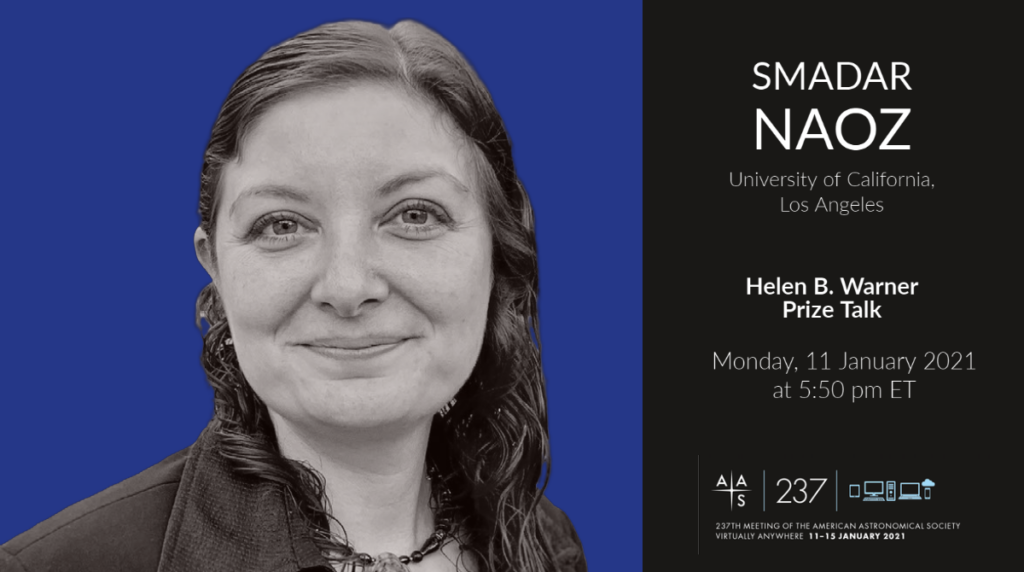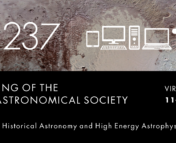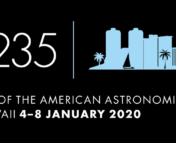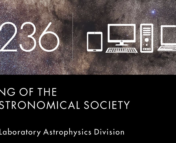In this series of posts, we sit down with a few of the keynote speakers of the 237th AAS meeting to learn more about them and their research. You can see a full schedule of their talks here, and read our other interviews here!
Professor Smadar Naoz is a professional puzzle solver. She takes the puzzles that astronomical observations present, and solves them using physics. For each new, bizarre phenomenon that observations show, she asks, “What’s the underlying physics that explains this, and what can we predict?”
Most of her puzzles involve dynamics, the study of motion in the cosmos. With a vibrant research group, she tackles these puzzles as a faculty member in UCLA’s Division of Astronomy. At this year’s AAS meeting, she’s earned the Helen B. Warner Prize for Astronomy (awarded to an early career scientist for a significant contribution to astronomy) for “her many contributions to theoretical astrophysics, especially her influential and creative studies in cosmology and dynamics.”
Professor Naoz’s journey into astronomy was distinctly marked by her determination. Growing up in Israel, she always wanted to be an astronomer, thanks to plenty of Star Trek, and learned to read from an encyclopedia (while also dealing with dyslexia). In 8th grade, a required aptitude test told her she could never succeed in higher education, let alone the difficult study of astrophysics, but she continued on. (However, she does credit this as the start of her experiences with impostor syndrome, a common phenomenon especially among minorities in physics.) Later in high school, she wasn’t allowed to take physics courses, so she tried to learn on her own from the famous textbooks by Landau and Lifschitz instead. Naoz ended up going to college for physics, eventually earning her MS at The Hebrew University and PhD at Tel Aviv University. She then went on to postdocs as a prize fellow at Northwestern — CIERA and Harvard CfA before joining the faculty at UCLA.
A lot of her current research stems from the most exciting discovery of her career (so far), the eccentric Kozai-Lidov effect. The original Kozai-Lidov mechanism, discovered in the 1960s, describes the motion of a “hierarchical” triple system, where there are two objects in a close orbit and a third distant perturber (see Figure 1, below). Three body systems don’t have a general stable solution (they’re chaotic!), but this hierarchical arrangement was shown to work on short timescales, leading to exchanges between eccentricity and inclination for one of the inner objects’ orbits.
In 2010, Prof. Naoz realized a problem with this Kozai-Lidov mechanism: it required very specific initial conditions, and one of the assumptions wasn’t always valid! Kozai-Lidov stated orbits could not flip from prograde to retrograde, but with a different set of assumptions Naoz proved that orbits could, in fact, flip their orientation (see Figure 2). This new process is now referred to as the eccentric Kozai-Lidov effect, or EKL. It has had many applications to modern astrophysical problems, notably including the orbital evolution of Hot Jupiters with their strange backwards orbits and black hole mergers!
She’s currently working on multiple research projects, including how binary stars near Supermassive Black Holes (SMBHs) evolve from normal binaries to merging compact objects (this is actually the focus of her AAS talk!). Naoz is also working on the puzzle of globular cluster formation — how could they form without dark matter? She does all of this with her “toolkit” of theoretical astrophysics: analytic/basic physics, equations (some of which need to be numerically solved), and understanding your approximations. Having been a student in one of her classes, I can safely say that one of my biggest takeaways from her teaching was that you need to explain the approximations and assumptions you choose in your work!
One final bit of advice from Prof. Naoz: “Don’t let people label you, don’t give up, don’t be afraid to fail.”
You can watch her AAS 237 plenary talk about the dynamics of binary stars near galactic centers next Monday, January 11th, at 5:50pm ET.

Astrobite edited by: Mia de los Reyes
Featured image credit: American Astronomical Society



